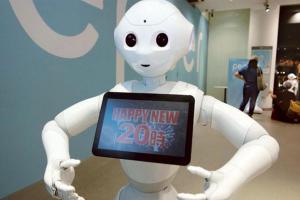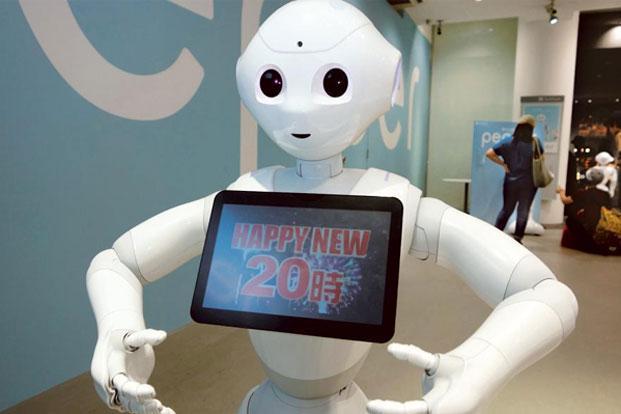 Most people who have seen movies such as Star Wars, Terminator,Transformers, Surrogates, Bicentennial Man and The Matrix may believe that robots and computers will soon rule over, or even eliminate, humans.
Most people who have seen movies such as Star Wars, Terminator,Transformers, Surrogates, Bicentennial Man and The Matrix may believe that robots and computers will soon rule over, or even eliminate, humans.Their fears may not be totally unfounded, especially when you consider what supercomputers are capable of. Take the case of the Watson from the International Business Machines Corp. (IBM) that used its artificial intelligence capability to beat accomplished players at the quiz gameJeopardy! and is now also being used to serve as a clinical decision support system for medical professionals.
On the other hand, in the case of human-like (better known as Androids) social or assistive robots, even an advanced robot such as Asimo took years to learn to walk without tripping, something infants learn rapidly due to the highly evolved and complex human brain. And the $1,600 (around Rs.1 lakh) humanoid robot Pepper, owned by the SoftBank Robotic Holdings Group, is just learning how to emote and empathize with humans.
These examples do not undermine the fact that human beings are helping robots get smarter with every passing day.
Consider these cases. Almost a year ago, scientists from Cornell University, US, led by an India-born researcher Ashutosh Saxena, said they had developed Robo Brain, a large computational system that learns from publicly available Internet resources. It downloads and processes hundreds of images, videos and how-to documents and appliance manuals.
Information from the system, according to Saxena, is being translated and stored in a format that robots will be able to draw on when needed. The details are available at Robobrain.me. Similar to humans, Robo Brain will have teachers, thanks to crowdsourcing—the phenomenon of soliciting help from a large group of people, most of who may be in other countries and can be accessed on the Internet.
Similarly, Google Inc.’s driverless cars use sensors, radars, cameras and harness computing power to figure out routes and avoid collisions. Interestingly, a significant part of the computation and data processing is done by the teams back at the technology company’s server farms.
These are examples of cloud robotics, which takes advantage of advances in cloud technologies such as cloud computing, cloud storage and other Internet-based technologies centred around the benefits of converged infrastructure and shared services for robotics.
When connected to the cloud—a metaphor for services provided over a network, primarily the Internet—robots benefit from the powerful computational, storage and communications resources of huge data centres that can process and share information from various robots or agents that include other machines, smart objects (the Internet of Things concept) and even humans. Humans can also delegate tasks to robots remotely through networks.
Cloud-computing technologies thus enable robot systems to be endowed with powerful capabilities while reducing costs.
These advancements in robotics also bring in their fair share of legal implications in terms of security, privacy and liability—themes covered by many international scholars in their research papers.
However, the rise of cloud robotics and the Internet of Things—characterized by objects with sensors to understand features of their environment and an ability to communicate—also depends on cross-border flow of data and increases opportunities for protectionism, notes Anupam Chander, director of the California International Law Center and Martin Luther King, Jr Hall research scholar, in his preliminary draft of a 25 March research paper.
In his paper, a copy of which is available at www.bit.ly/1CkQcBN, along with a panel discussion on the subject at the WeRobot 2015 conference, Chander argues that even if a consignment cannot be refused at the border due to international trade commitments, it may still be rejected because of its embedded data flows.
This implies that a robot which receives data from, and transmits data to, a server that resides in another country may require the equivalent of a passport for free trade of information.
A Dropcam, Fitbit, Nest thermostat, even a Google car, all depend on the flow of data to the home country of their creators, Chander points out, concluding that the Internet of Things and cloud robotics may thus find themselves “foiled by national borders, victim to a new privacy-based non-tariff barrier to trade”.
Citing the example of how a fire on the fourth floor of a Samsung office building in Gwacheon, South Korea, in April 2014 caused Samsung Smart TVs all across the US and Europe to go on the blink, Chander noted that “even if the Samsung Smart TV itself is in Kansas, its brains, memory or both reside in Korea”. Hence, he advises that international trade law must grapple with the ways that the very ontology of things is changing.
